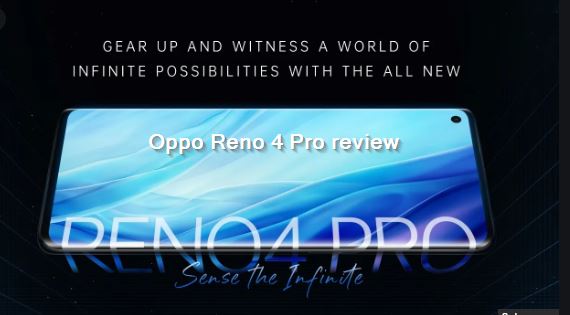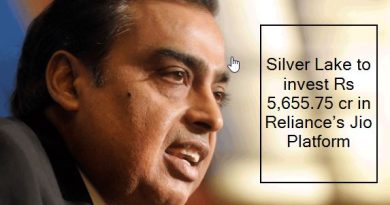Oppo Reno 4 Pro review: Strong on design, display, and fast charging
Reno 4 Pro comes as another beautiful handset from Oppo with a 90Hz display, a magnificent design, and a decent battery but its Rs 34,990 price seems too high against the OnePlus Nord’s. India Today Tech finds out if the Reno 4 Pro is worth buying in the review.
Oppo Reno 4 Pro review
Back in March, when I began reviewing the Reno 3 Pro, I had high expectations from the device simply because it is coming from Oppo and falls under the mid-range. But my expectations did not meet with what Oppo claimed with the device. No doubt it is a beautiful phone but its specifications and overall performance left me wanting more. After a few months, we have the successor to it, the Reno 4 Pro.
With Reno 4 Pro, Oppo is addressing some of the shortcomings the Reno 3 Pro brought along. Although, the naming is kind of intriguing, given Chinese brands believe ‘4’ is an unlucky number. Anyway, the Reno 4 Pro takes forward the legacy of Reno-series phones of being one of the most beautiful smartphones in the market. It even takes things up a notch with a powerful mid-range processor, an AMOLED display, and, most importantly, the 65W fast charging that is the maximum speed commercially available for mobile battery charging. But it also has a hefty price of Rs 34,990, which could be a little difficult to justify, especially against the likes of OnePlus Nord and Realme X3.
Should you go for the Rs 34,990-priced Oppo Reno 4 Pro for the chasm it brings to the table against the rivals or just skip it? Here is our review to help you decide that.
[amazon box=”B089MTKP37″ “small”]
Oppo Reno 4 Pro: Design, Display and Build Quality
If I were asked to judge a competition on who can make the most beautiful smartphones in the mid-range, I would choose Oppo year after year. The Reno series brings about a premium touch to them that cannot be ignored and the reason why I am telling you that is because I like the matte finish on a smartphone more than the shimmery one. If you like flashy colour tones, such as those on Realme phones, you will feel the design on Reno 4 Pro a little too boring. It is a well-made slab of glass frosted all over on the back, except for the cuboidal area on the top left where the cameras are given.

The way these cameras are placed on the back emanate a level of plushness to the Reno 4 Pro. These are individual circular modules stacked vertically without any bridge or material connecting them. The modules are big and sit stoutly on the back, to jut out quite much. While this design is pleasing to eyes, it is not utilitarian much — you may end up scratching the camera glasses if you do not encase the smartphone with some the thickness equal to that of these camera islands. Towards the side of these cameras, there is “INNOVATIVE QUADCAM” written possibly as a marketing pitch. Reno 4 Pro comes in Starry Night and Lunar White colours and the subject of this review is the latter.
I tried the speaker, which is located inside the grille on the bottom, and found them quite average. There is nothing special about the speakers, even though the smartphone comes with Dolby Atmos. The fingerprint sensor is integrated on the display, the performance of which I will talk about a little later. Then, you have the 3.5mm headphone jack, which does not make a difference now, given the wireless earbuds have gone extremely mainstream now. The power button is reachable from the thumb in your right hand and the fingers when held in the left hand.
Reno 4 Pro has a 6.55-inch Full-HD+ (1080×2400 pixels) AMOLED display with the Always-On feature, which I find very useful. There is a punch-hole on the display on the left, but this one is a tad smaller than what I have seen on other smartphones. Since it is an AMOLED panel, the colour reproduction is nearly accurate, things can look natural and oversaturated depending on the display settings. Watching movies and shows on it is an enjoyable experience. The blacks in shows such as The Witcher and Chilling Adventures of Sabrina are produced quite well. Even the photos look very appealing on it, because of the large real estate.

It is a 90Hz panel, which means I can see everything happening on the screen a lot smoother than I would if I dial down to 60Hz from the settings. But, by default, the setting is set to auto. I enjoyed browsing the internet and playing games on the 90Hz display for it is more responsive and immediate in showing any changes happening in the content I am looking at. While 90Hz is something that now a Rs 12,999 smartphone also offers, so it might not respect the price the Reno 4 Pro bears.
The in-display fingerprint sensor, which I talked about earlier, is below average. It is an optical sensor, which means the sensor brightens the concerned area to detect the fingerprints but it misses them often while doing so. Sometimes I had to give up and unlock the phone using the passcode because the facial scanning is also not very reliable. The facial scanning will recognise my face in a well-lit environment but not so much when I am standing against a light source or in a dimly lit room. For the latter, the smartphone has something called “brightness compromise” and I am not sure what it does apart from lighting the display with a mild brightness, which is not enough to compensate for the lack of light in the environment.
At 161 grams, Reno 4 Pro is the lightest Reno-series device, which I can confirm. The device feels so light and can be carried inside the pocket or in hands for long hours without causing a strain to them. The build quality is solid and it feels Oppo Reno 4 Pro is here to make the heavyweights such as Galaxy S20 unimpressive design-wise.

Oppo Reno 4 Pro: Performance and Battery
Running the show on the Reno 4 Pro is an octa-core Qualcomm Snapdragon 720G processor with a maximum clock speed of 2.3GHz and paired with an Adreno 618 GPU. It has 8 gigs of RAM and 128GB internal storage, which can be expanded through a microSD card.
[amazon box=”B089MTKP37″ “small”]
Now, Oppo’s choice for the processor on the Reno 4 Pro seems like a trade-off because the variant sold in China has a Snapdragon 765G processor but with three cameras while the Indian one has four of them while sporting a Snapdragon 720G processor. OnePlus Nord is powered by the Snapdragon 765G processor for nearly Rs 10,000 less, which can make it a bit difficult for Reno 4 Pro to pit itself when squaring off against the rivals. This is about the competition in the market, but what is in it for you?
As a regular smartphone user, you will not see much difference between the Snapdragon 720G and Snapdragon 765G for everyday tasks, such as opening social media apps, texting someone on WhatsApp, using the camera, and listening to music on the phone. It can handle multitasking quite well and can retain many apps in the background, thanks to its RAM capacity. Of course, the Snapdragon 765G will be a bit snappier than the Snapdragon 720G but that difference is not enough to be a concern. But the same difference becomes important enough to be considered when I played games on the Reno 4 Pro.

I played PUBG Mobile, Call of Duty Mobile, and Asphalt 9: Legends on the Reno 4 Pro to test if it can hold water against the claims. To some extent, it did unless the games begin to stutter and show frame drops and visible lags. I could not play PUBG Mobile or other games on their full graphic settings and had to settle for the second-highest option. The smartphone does not warm up much even in a 45 minute-long gaming session, which is somewhat expected since the games I played were not set to their highest graphic settings.
Reno 4 Pro runs ColorOS 7.2, which is similar to the ColorOS 7 but adds some extra features over and above what has been available. There is a bubble that floats on the screen when there is a game interrupted by either a call or a WhatsApp message. It is a handy feature although, the processor makes the entire process a less snappy than it should have been. Other features such as dark mode and various privacy modes for apps are standard. For banking apps, Oppo displays what it calls a “secure environment” on the status bar, which seems reassuring, to say the least. Also, there is an Oppo Relax app preloaded that helps you calm yourself during your downtime.
The processor can handle most tasks quite well, however, and for a long duration, thanks to the 4000mAh battery on it. The battery usually lasts for about a day under normal usage. By normal, I mean using the smartphone for photography for about 15 minutes, for gaming about 45 minutes, for texting and browsing the internet for nearly five hours, and watching a 2-hour long movie on Netflix. At the end of the day, the phone still had about 12 per cent battery. But this is a non-issue because the 65W fast charging tops the battery up in about 30 minutes. It is magical how Oppo’s fast charging technology has revolutionised mobile battery charging and it is something that should be lauded.

Oppo Reno 4 Pro: Cameras
“If it is an Oppo phone, it will surely get photography right.”
These were the words my friend enthusiastically said when I showed him the Reno 4 Pro. He had not clicked a single photograph from the Reno 4 Pro but he knew it will turn out to be one of the best in the class. So to authenticate his belief, I put the Reno 4 Pro under the test.
I was impressed by how vivid, crisp, and well-detailed the photographs turn out to be, especially those taken in daylight. The dynamic range in the photographs is good and retains the depth of colours for most subjects. The cameras can retain the natural colours without adding any kind of artificial tones to them. The portrait shots clicked using the rear camera turn out good but have skin smoothing and aggressive blurring, as well.

There is a main 48-megapixel camera, which does the major tasks, but it is accompanied by an 8-megapixel ultrawide sensor, a 2-megapixel depth sensor, and a 2-megapixel macro sensor. The main sensor can provide up to 10X digital zoom while the optical zoom on it is 2X. The photos click in 10X zoom look like a caricature and have only so much detailing. For clicking photos in low light environments, the Reno 4 Pro has the Night mode that does add some brightness to the scene and makes objects look sharper than otherwise.
[amazon box=”B089MTKP37″ “small”]
For ultrawide shots, the 8-megapixel camera does a good job of capturing many elements except it loses out on details while doing so. There are also low levels of barrel distortion in the photos clicked using the sensor. The macro sensor is average; it clicks photos from closer (between 4-6 inches) that look washed off and dull. The details are also scarce in some photos too. The first two sensors can also be used for video recording at up to 4K 30fps resolution. Oppo has provided the Reno 4 Pro with the Ultra Steady mode which removes the shakes from the video.
The selfie shooter is a 32-megapixel one, which can click some likeable photos. I was happy with the photos that I clicked using the front camera. There is AI Beauty already turned on but it can be turned off depending on the preference. I turned it off to ensure my face does not end up looking artificial and unrealistic in my selfies. The camera can also click selfies in night mode and record videos at 1080p 30fps.

Oppo Reno 4 Pro Review Summary
So now you know how the Reno 4 Pro display is, you know how well it performs, its battery life, and finally, you have seen how good the Reno 4 Pro clicks the photographs. But if there is still some confusion, let me recall everything that I have observed about the Reno 4 Pro in a concise format.
The Reno 4 Pro has a gorgeous design and its display is also quite good. The Reno 4 Pro cameras can click good photos and better selfies, but more in daylight than during the night. Its battery can last for about one day but that is not a problem because you can charge it in about 36 minutes. And the performance it delivers is meant for everyone but the gamers.
For Rs 34,990, Reno 4 Pro is overpriced for the specifications it offers. Yes, it has the industry-best 65W fast charging, some really good cameras, and a marvellous design but the trade-offs are not compelling enough to justify the price. Moreover, OnePlus Nord and Realme X3 are more competitive and offer more features, better gaming performance, and on par photography just without the 65W fast charging. The price gap is so wide the Oppo’s six-month-old Reno 3 Pro seems pricier than the OnePlus Nord. But well, if its good looks are anything that can win you over despite it being an overpriced deal, you can surely get the Reno 4 Pro as soon as it goes on sale on August 5.




